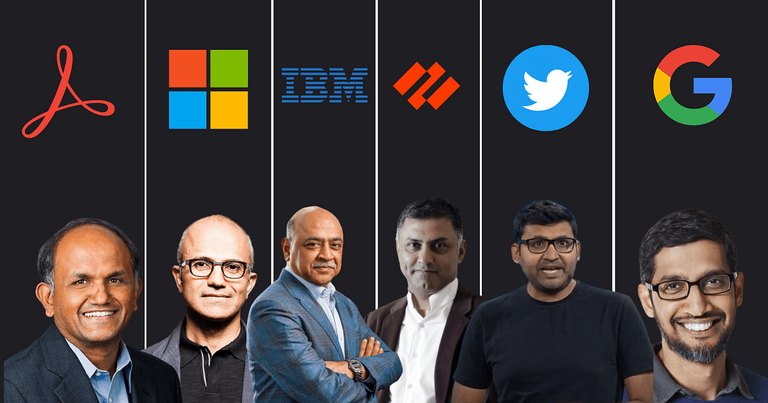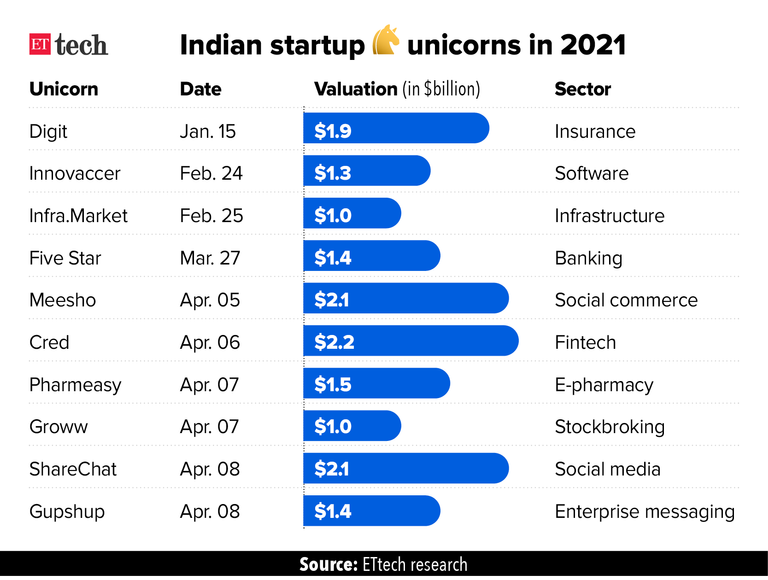This must certainly have crossed your mind at some point...
Yeah, most definitely. Especially if you are a tech enthusiast.
You know Google, Adobe, Microsoft, and IBM are all run by individuals who experienced their childhood in India.
The most recent to join these groups is Twitter's President Parag Agrawal who took over from Jack Dorsey last year December.
Taking into account the statistics that people of Indian nationality make up 1% of the whole U.S. populace yet they make up for around 6% of Silicon Valley's labor force.
So it begs the question,
Why are there so many TECH CEOS who are Indians?
At the point when Satya Nadella took over as CEO of Microsoft in 2014, the organization was not doing so great.
Bill Gates was said to be angry and bitter at the state of things at Microsoft.
His immediate replacement, Steve Ballmer, evidently wasn't any better.
Microsoft was becoming a dinosaur. A shadow of itself.
Simply because it had failed to improve and innovate.
For instance, it lost the Smartphone fight to Apple.
But then comes Nadella, a designer who rose through the positions of Microsoft to turn into the President.
Nadella changed the way of life of the organization.
He made it clear to Bill that being angry isn't the way forward.
He likewise looked to make Microsoft significant once again.
Presently we need Microsoft to flourish in a mobile-first and cloud-first world. Just think of Azure and its impact on Cloud engineering.
Under Nadella's leadership, Microsoft moved its product to non-Windows gadgets, and an expansion of its cloud business Azure followed.
That creative soul of critical thinking was reproduced in his local country, India.
Now a little backstory of the country India
India is home to almost 1.4 billion individuals. It's the second-most crowded nation on earth, closely behind China, and is expected to surpass China as the most populous country in a few years.
Even though India has gained striking headway, poverty is still yet a significant issue.
Almost a fourth of the populace lives beneath the poverty line of $1.90 every day according to the United Nations Development Program.
Corruption, poor infrastructure, and limited opportunities are some of the issues they face.
So they figure out how to be tough, adjust, and conquer these limitations
This leads them to be issue solvers - a key resource in any partnership.
Sundar Pichai has needed to tackle numerous issues in the wake of taking over in charge of Google in 2015 at at a time when the Big Techs are being scrutinized over the power they hold.
He turned into the model of a kinder, more settled, gentler innovator and leader in the tech world.
Pichai acquired a degree in Engineering at one of the Indian Institutes of Technology(IIT's).
The IITs are sort of the Indian equivalent of MIT with an even lower acknowledgment rate of about 1% or 2%.
When Pichai graduated, his pass to America came as a Master's at Stanford.
Going to a top graduate school in the United States is how the majority
of Indians land up in a place that is known for its opportunities.
They all seem to follow this pathway:
They did their undergrad at an incredible school in India.
Then they got a Master's degree in the U.S.
In which their area of concentration of study was STEM - Science, Technology,
Engineering, and Mathematics.
Statistics have it that more than half of the international students that started studying in America in the last year pursued a STEM degree.
This is because American immigration favors individuals with specialized
abilities.
When Pichai graduated, he obtained an H1B visa to work at consulting firm McKinsey.
The H1B visa permits American organizations to employ foreign workers,many of who work in the IT field.
The U.S. government granted almost 75% of these visas to Indians in 2020.
In correlation, China dragged along in second, at 12%.
The fact that so many Indians can communicate in English has helped them significantly in achieving this and is of a gigantic benefit to the Americans.
Furthermore, the Indians are OK with American business culture, probably because it reflects their flourishing IT industry home in Bangalore, Chennai, also Hyderabad.
They're additionally bound to need to work abroad.
In the case of the Chinese, 80% of their international students return to China after their studies according to the Chinese Ministry of Education. This is simply because Chinese entrepreneurs prefer to start their own companies at home.
Alibaba is known as the Amazon of China
Tencent possesses the messaging application WeChat used by 1.2 billion individuals.
Huawei is one of the monsters of the tech business.
China's progress from an assembling center point to a Tech hotbed has generally been driven by its government strategy.
In the late seventies, Chinese pioneer Deng Xiaoping urged foreign organizations to set up workplaces in China which encouraged a start-up climate in China.
Then again, India has an issue of an excessive amount of talent leaving the country for good
It has the biggest number of migrants living abroad at 17.5 million, as per the UN.
Also, more Indians gave up their travel papers to become naturalized American residents in 2020 than the Chinese, continuing the trend for years.
However, in recent years there has been a ray of light from India, and the talent drain may begin to recede.
This is because an increasing number of Indian start-ups are becoming unicorns - which means, organizations that are valued at at least $1 billion.
Data platform says that India created 47 unicorns in 2021. Thats a massive growth from 17 in 2020. And more less in years past.
The tech ecosystem is being supported by strong investment companies, for example, Softbank that have been pumping cash into the Indian new companies.
In any case, to allure more individuals to remain in their local country, salaries will have to increase to match those of the US.
The normal American tech specialist earns around $98,000 every year as indicated by the web-based recruiting platform, Dice.
Tech salaries in India differ significantly, yet all the same the job site 'Indeed' fixes the median tech salary at $20,000 going up to as much as $33,000 which makes them a portion of the top workers in their nation yet at the same time, but undeniably not as much as what they'd make in the States.
As salaries grow alongside India's startup growth, this could have an effect on the number of exeptional Indians wanting to move to another country.
The one thing that the CEOs of tech giants have in common is their strong background in engineering.

